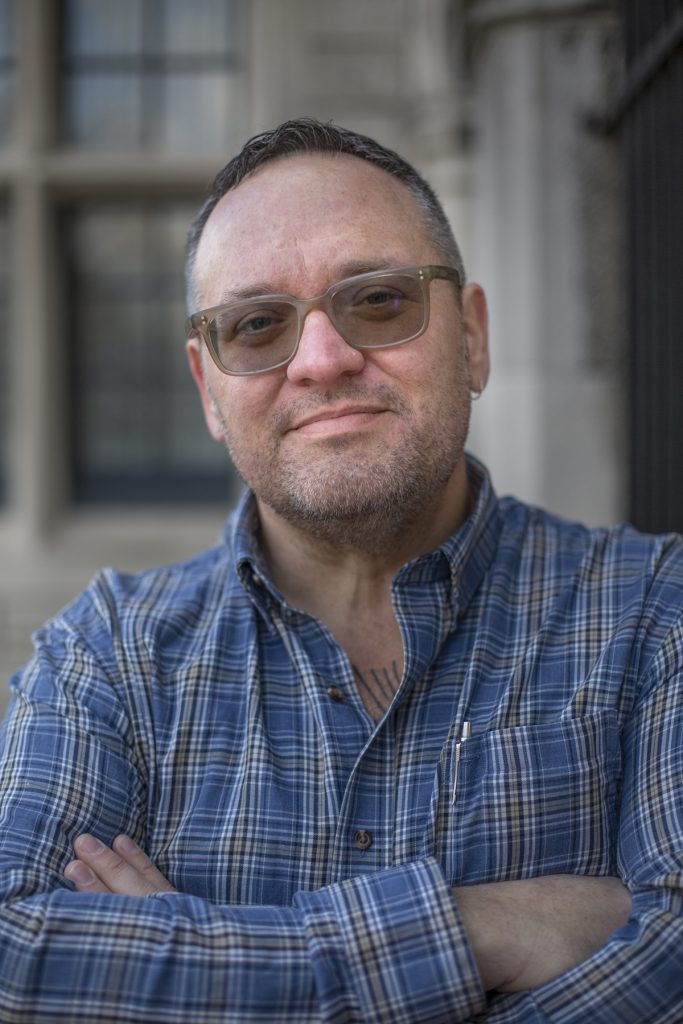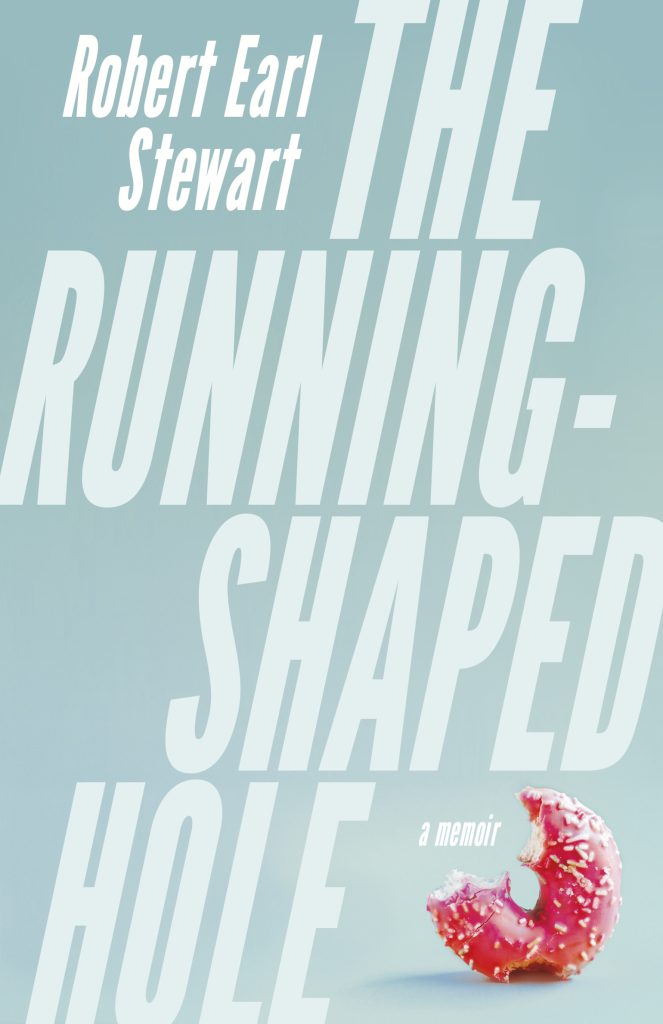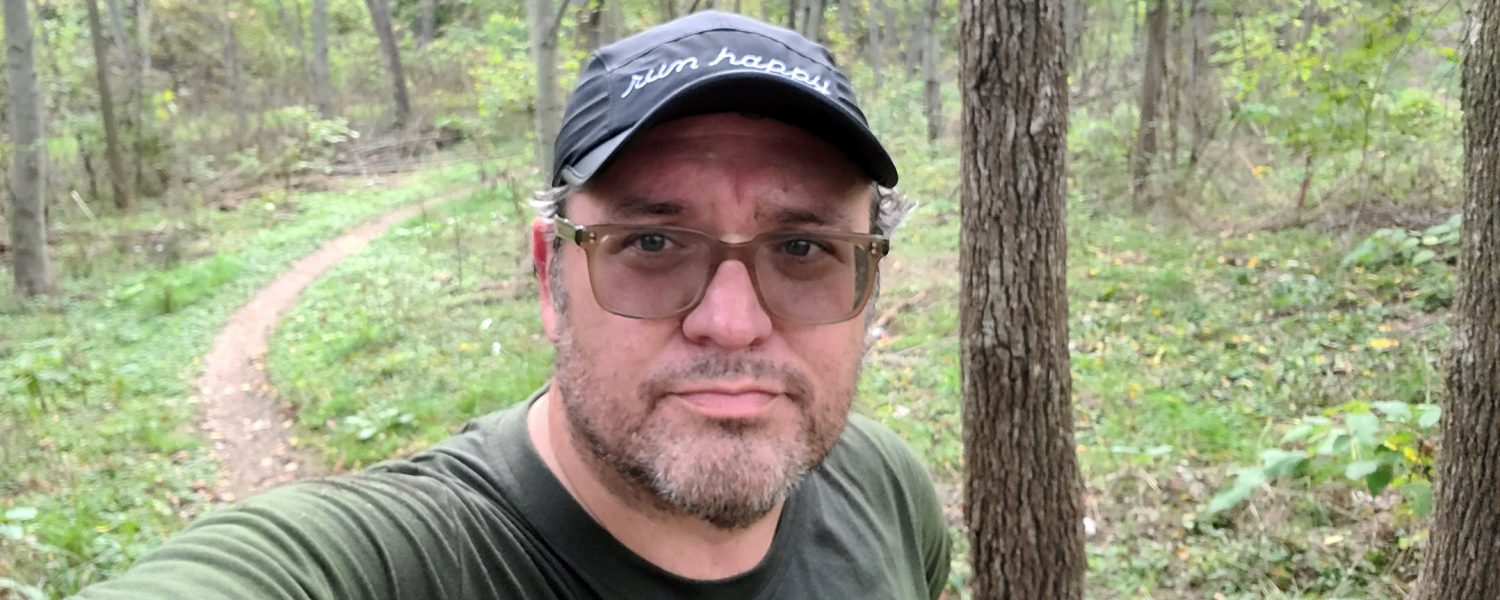Windsor Author Robert Earl Stewart
Chronicles His Struggle with Weight in a New Book
Story by Matthew St. Amand
Photography by Dax Melmer
The worst wounds are self-inflicted. Few are as galling and difficult to overcome than weight gain. We’re adults. We know what we ought to do, but it’s more fun turning meals into feasts, treating ourselves to lattes, energy drinks, booze and fast food, cholesterol and calories be damned. When it comes time to pay the piper, however, the price can be steeper than a bruised ego over squeezing ourselves into clothes that used to fit.
Robert Earl Stewart understands this reckoning. His came during an appointment with a cardiologist in 2013 when he was 38 years old.
In his forthcoming book, The Running-Shaped Hole, to be released by Dundurn Press on February 22, Robert writes about his ordeal and odyssey with food, weight, work and family life.
Early in the book, Robert describes the first signs of trouble: The appointment with the cardiologist was occasioned because he found himself short of breath. Not after running up stairs. Not after moving furniture.
“I began noticing I was having trouble breathing while talking,” Robert writes. “Even speaking at regular, conversational volumes, I was running out of air… I would sweat freely just speaking aloud.”
It didn’t help that the bathroom scale no longer registered his weight. The rare times he stepped on, the screen read “Err” indicating “Error,” necessitating an upgrade to a scale rated to 400 lbs. It told Robert that he weighed 368 lbs.

The morning of the fateful appointment, the personal realizations began before he even left the house. When making the referral to the cardiology centre, Robert was told to dress in “active wear” because he would be running on a treadmill during the stress test. The last time he had seen his “active wear” trousers, his wife, Jennifer, had them laid out on the end of the bed.
“Whose pants are those?!” Robert had asked.
“Those are yours, honey,” Jennifer said.
Robert stared at the outsized clothing, struggling to believe they were his. “They look like a flag ready to be draped over a coffin!” he had said.
As it turned out, the stress test wasn’t for another five weeks. This appointment was only the echocardiogram. That was plenty.
“I’d had ultrasounds before,” Robert writes, “of my heart, my guts and, of course, my liver—but this echocardiogram hurt quite a bit more, as the young female technician had to all but climb up on top of the examination table next to me in order to press the transducer into my flesh hard enough for the soundwaves to penetrate both tissue and bone…”
Following the appointment, Robert decided to get lunch. As he drove to a favourite spot—already deciding on his prodigious order—he experienced a moment of clarity.
“It was the fear,” Robert says. “For a brief moment, the liar inside of me was paralyzed by reality. The fantasy was ruptured. The reality that I had just been to a cardiologist’s appointment because I was eating myself to death set in.”
The crisis moment filled him with such terror and foreboding about his mortality that Robert skipped lunch and drove to Willistead Park. There, he did something he had not done in years: he went for a walk.
“Walking around Willistead Park twice left me more exhausted than when I finished the Detroit Free Press Half Marathon in 2015,” he says. “After that first walk, I went home and collapsed into bed and fell asleep.”
He continues: “I kept walking. I walked every day. By the time I went back to see the cardiologist five weeks later for the actual stress test, I had lost 60 pounds.”
Anyone who lost 60 lbs in five weeks would be rightly proud of that accomplishment, but Robert kept it real: “I still weighed over 300 pounds.”

He didn’t do great on the stress test, either. Although he didn’t hit the target heart rate the cardiologist was looking for, Robert was told that his heart was strong enough for him to do whatever it took to get healthy—walking, running, whatever he felt he could do.
That evening, he went for his daily walk. When he came to the corner of Moy Avenue and Riverside Drive, he decided to try jogging. He ran the two blocks over to Lincoln Road. The next evening, he jogged again during his walk, pushing himself to go a bit further.
Although he would ultimately lose more than 140 lbs and run the Detroit Free Press Half Marathon two years later, Robert is very clear that The Running-Shaped Hole is not a how-to or motivational book.
“I shared my story because I’m a writer,” he says. “I knew there was something compelling and interesting to me in the story.”
What does he hope readers will take away from his book?
“I hope readers find the book funny,” he says. “There are sad moments, too, but I try not to be taken too seriously. I’m not trying to tell anyone how to do this. If people are encouraged, that is great. I want the reader to be entertained.”
Once he lost the weight and changed the habits that endangered his life, Robert acknowledges it was only then that the hard work began.
“After the Detroit Half Marathon I realized I was injured,” he recalls. “I had a weakness in my lower back that caused me to compensate, unknowingly and hurt myself. I went to physio and had to stop running for a while. And the cycle began again: depression set in, I began eating, I put on weight. When I did run, I felt terrible.”
After taking the time to heal, Robert is back running. The struggle continues, but as he explains in his book, he has put the tools in place to keep making the right decisions and to not beat himself up when he has a slip. He is careful to remember something else he learned along the way: he is only human.
To learn more about The Running-Shaped Hole, visit dundurn.com.




Add comment